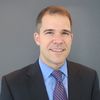George Anders is a bestselling author and journalist with three decades of experience writing for national publications. He is the author of " The Rare Find: Spotting Exceptional Talent Before Anyone Else," as well as three other nonfiction books. Anders spoke with Tom Fox, who writes the Washington Post's Federal Coach blog and is the director of the Partnership for Public Service's Center for Government Leadership.
What strengths should a federal leader look for when hiring new employees?
The one at the top is resilience -- the ability to bounce back from hard times, to come up with a Plan B and to figure out how to keep moving toward a goal even when early feedback is discouraging. I would also add efficiency -- the ability to get things done, particularly when you don't have control of the other party. Self-reliance is another one. You need to figure out your own strategy and decide how what you're doing is going to mesh with your organization's priorities.
It's also important to be a quick-learner. Leaders should look for someone who has a history of picking up new skills, moving into new settings and mastering new technologies. Curiosity has always been one of my favorites. It's not so much IQ-level intelligence, but someone who has the ingenuity and the shrewdness to succeed.
What methods should federal leaders use to pick the right person for the job?
When you're looking at resumes, first narrow down to applicants who are clearly competent. When narrowing the pool further, it's important to find the right character, success markers and personality. In my book, I talk about Google's habit of reading resumes upside-down. Once they know they're looking at someone who has the right experience and education, they start asking the questions: What else do you do with your life? What are your pursuits? Too often, we regard the last two lines on a resume as filler, but sometimes they can really speak to what drives a person.
What advice do you have for federal employees who are looking to become "the rare find?"
Sometimes if you wait for the job posting, you may be too late. Get to know people who have money in their budgets and are expanding their agencies in new, innovative ways. Use social media in a way that allows employers to find you. Establish the kind of Twitter stream that gets people noticing what you're doing. Post your resume and bio on LinkedIn, but also look for the chat and dialogue boards where people hangout. If you're trying to connect with people, post a short video on YouTube that shows you being persuasive or engaging on a topic. Think of the Internet, particularly social media, as an area where you can make your mark. You can show what you're good at and employers can find you.
How can managers use your "jagged resume" and "talent that whispers" concepts when hiring?
The "jagged resume" concept is powerful, because there are people who have a handful of extraordinary skills, but they also may look like they have deficits. Deficits, such as being laid off, may not be that crucial. There are people with great skills who through no fault of their own have been caught on the wrong side of a layoff. In many cases, these people may be ready to come back with tremendous energy.
As for "talent that whispers," we often have a narrow pool of people that we consider for a job. A lot of times, there are some fascinating people outside those horizons. Look for the people who have a lot to contribute, but may be outside of your normal radar.
How can the federal government overcome obstacles to hiring high-quality talent?
Think about the talent that is already on your payroll. Do you have people in the right jobs? I think the ability to rotate people around in positions keeps things fresh. It's great to have people who are experienced, but sometimes it's great to take those skills, put them into a new setting and take on a new area.
Who have been your leadership role models?
The first would be Paul Steiger, who was managing editor of the Wall Street Journal. He knew how to be disarming and funny, when necessary, in a high-tension, stressful world. It was great to see that you didn't have to be the loudest shouter to rally a very effective team. I think with that sense of fairness, you get fairness and loyalty in return. The second would be Jeff Bezos at Amazon. He's a tough boss, but he has a single-minded focus on doing what's right for the customer. He has a great sense of knowing who's using his company and what they want. I think the ability to prioritize to the outside can do a lot of organizations good.
This post was originally featured on The Washington Post's website.
